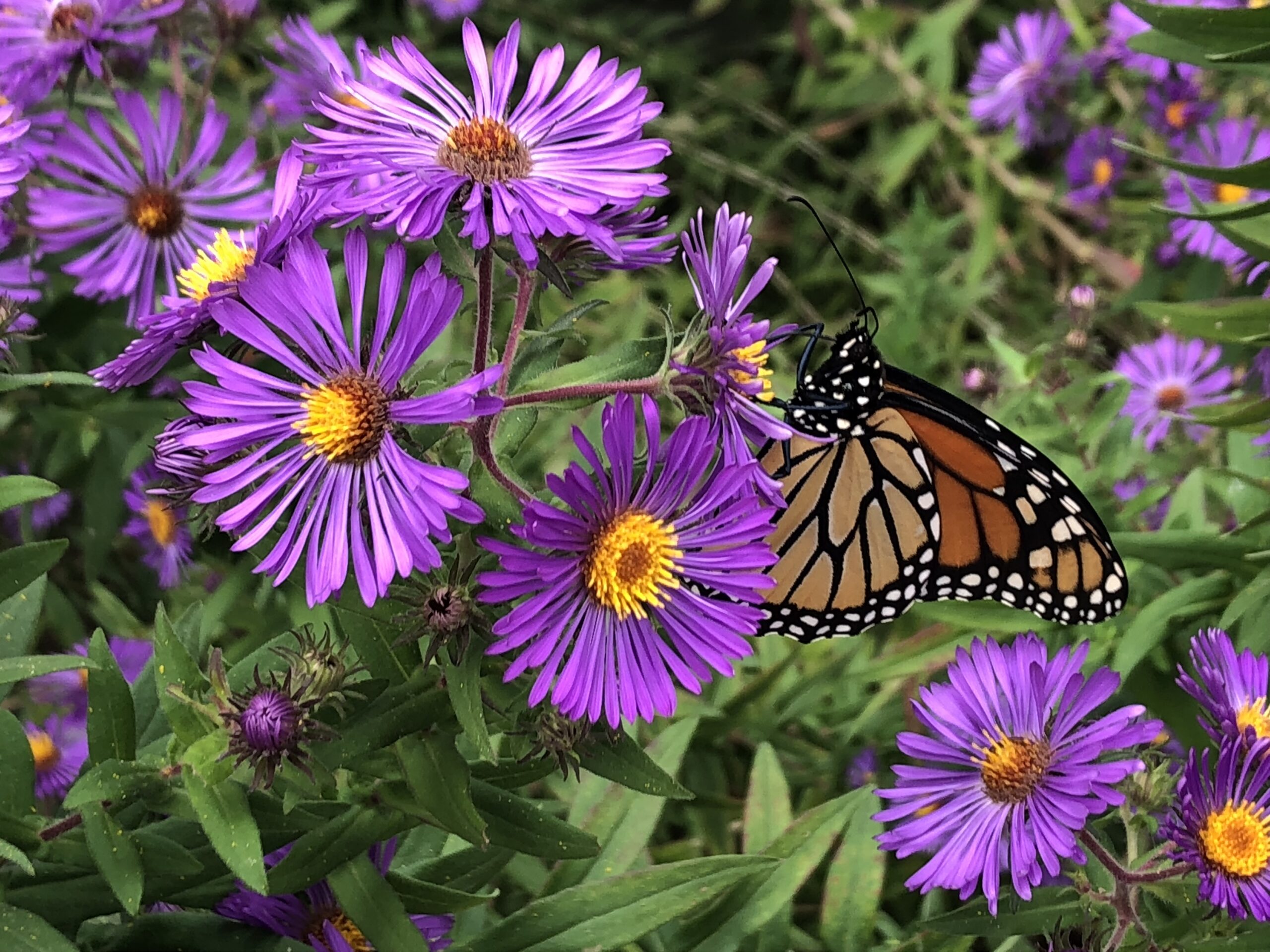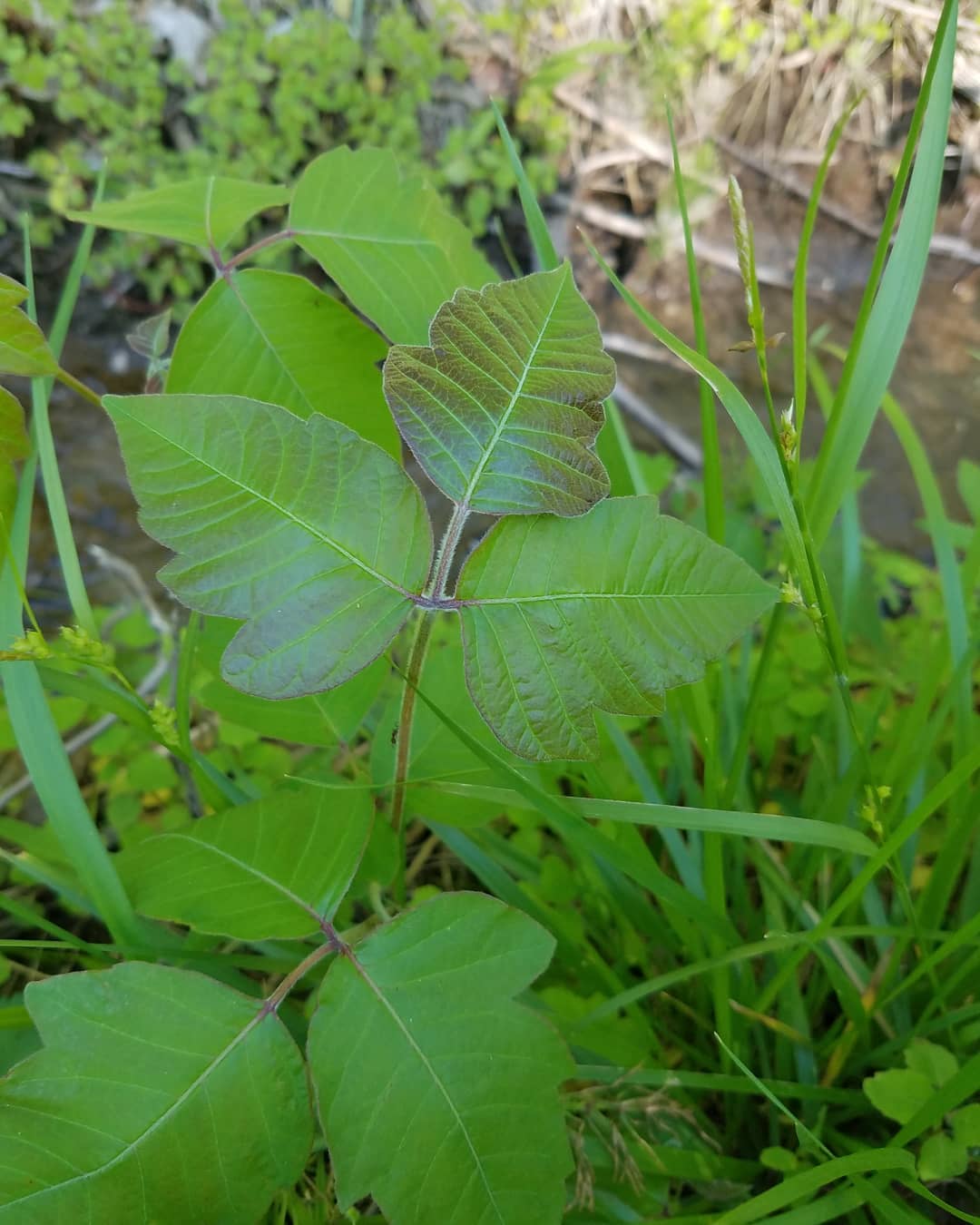Bark to Basics Part I: Identifying Trees at New Salem by Their Bark
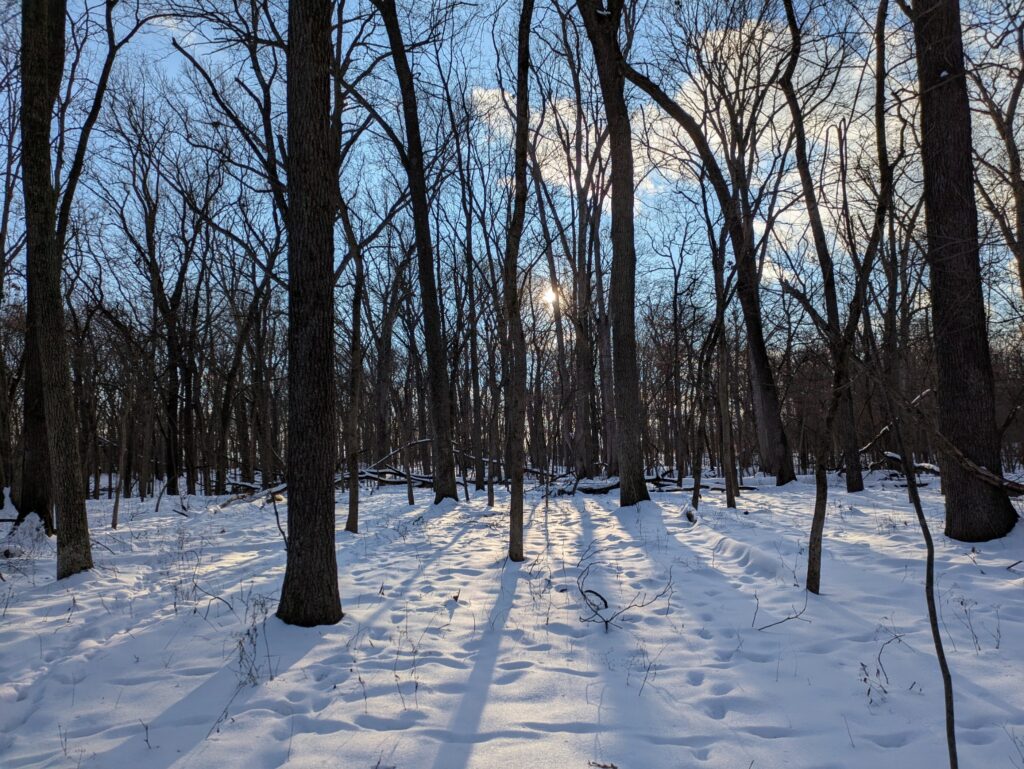
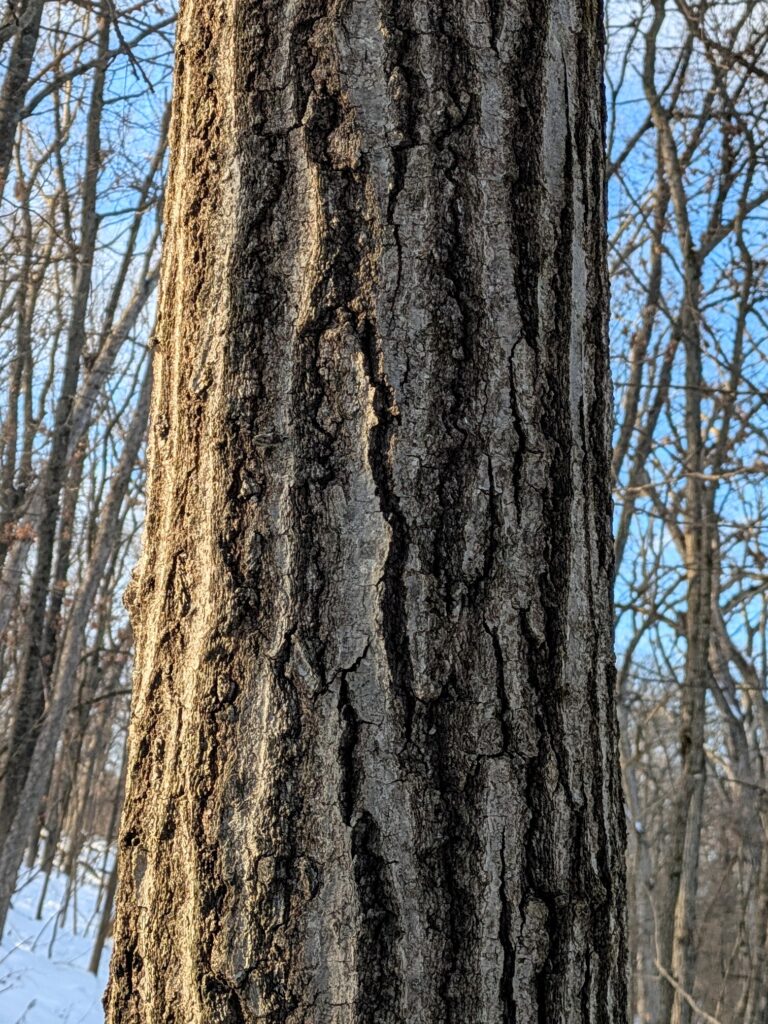
Tree #1
Red oak (Quercus rubra)
The bark of a mature red oak can be identified by the unique long, unbroken smooth parallel stripes (“ski tracks”) and shallow furrows. This tree is one of the most dominant in the canopy on Cardinal Ridge Trail, a common species found throughout the state in upland forests and other well-drained habitats. Oaks are considered a keystone species, supporting more life-forms than any other group of trees, including countless insects, birds, mammals and fungi.
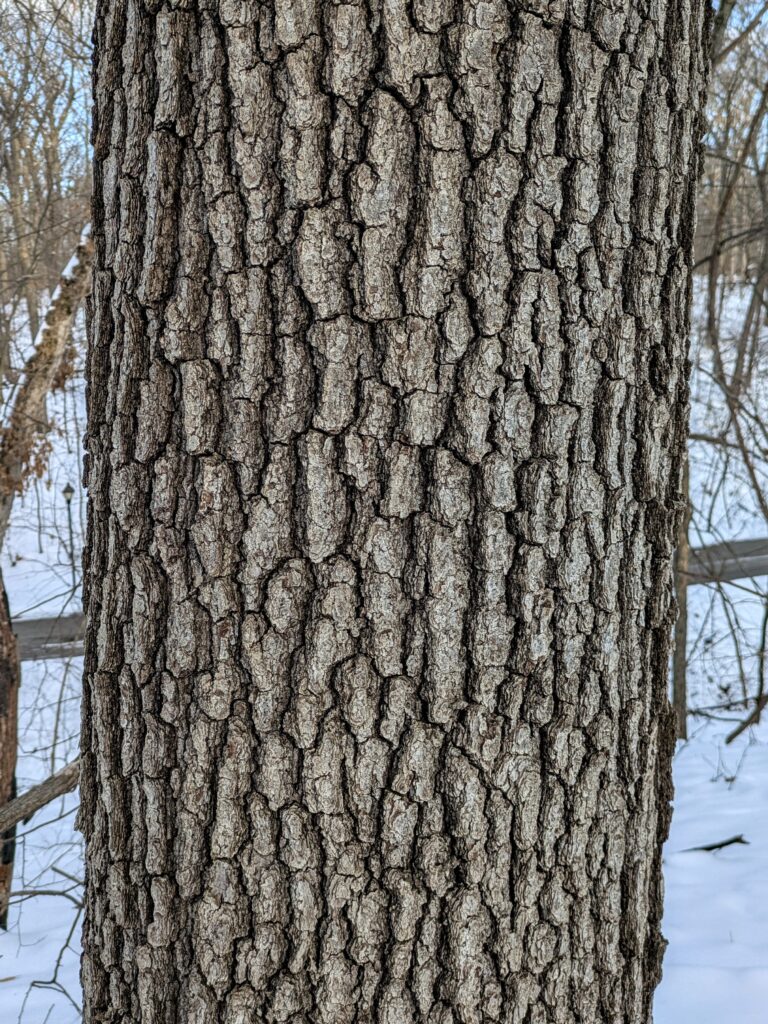
Tree #2
Black oak (Quercus velutina)
Often confused with red oak due to leaf similarities, black oak can be distinguished by its dark gray, blocky and deeply furrowed bark. While the two species sometimes grow together, black oak thrives in poor soils and dry conditions, commonly found on thin blufftop soils and sandy savannas.
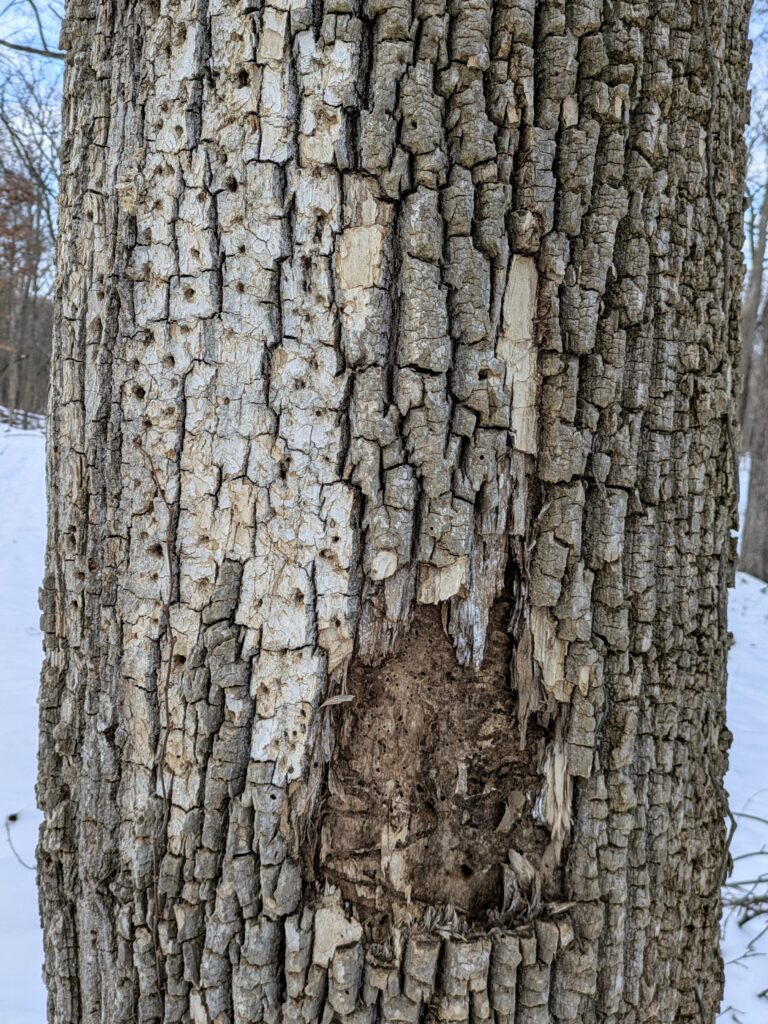
Tree #3
White ash (Fraxinus americana)
Once a common component of the forest at New Salem, all ash species have nearly disappeared due to Emerald Ash Borer infestation. Bark is pale gray, deeply furrowed in an interwoven diamond pattern— when it can be found. Many of the decaying trunks that are still standing have lost their bark, showing the borer galleries and evidence of woodpeckers seeking a meal!
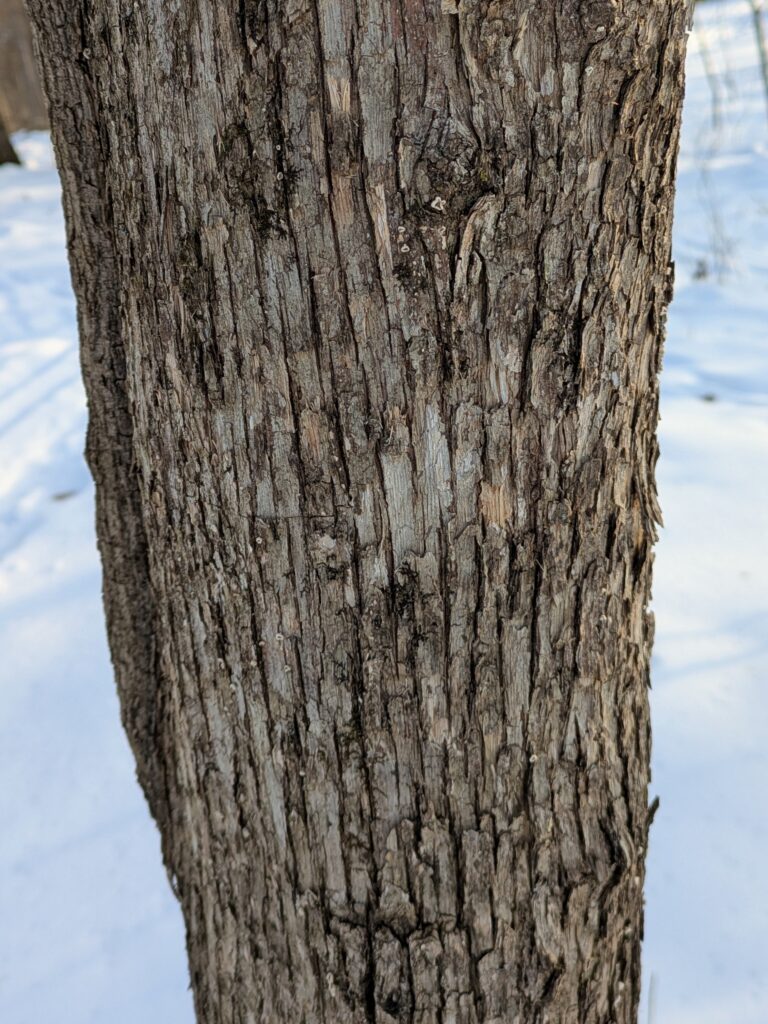
Tree #4
Ironwood (Ostrya virginiana)
A small to medium understory tree, ironwood AKA hop hornbeam is easy to spot in the winter from a distance, as one of the species most likely to have leaves clinging late into winter. The bark is characterized by its shreddy, grey-brown texture that peels in thin, flaky strips. The ironwood is valued for its toughness and resilience, both in terms of its physical structure and its ability to grow in dry, shaded conditions.
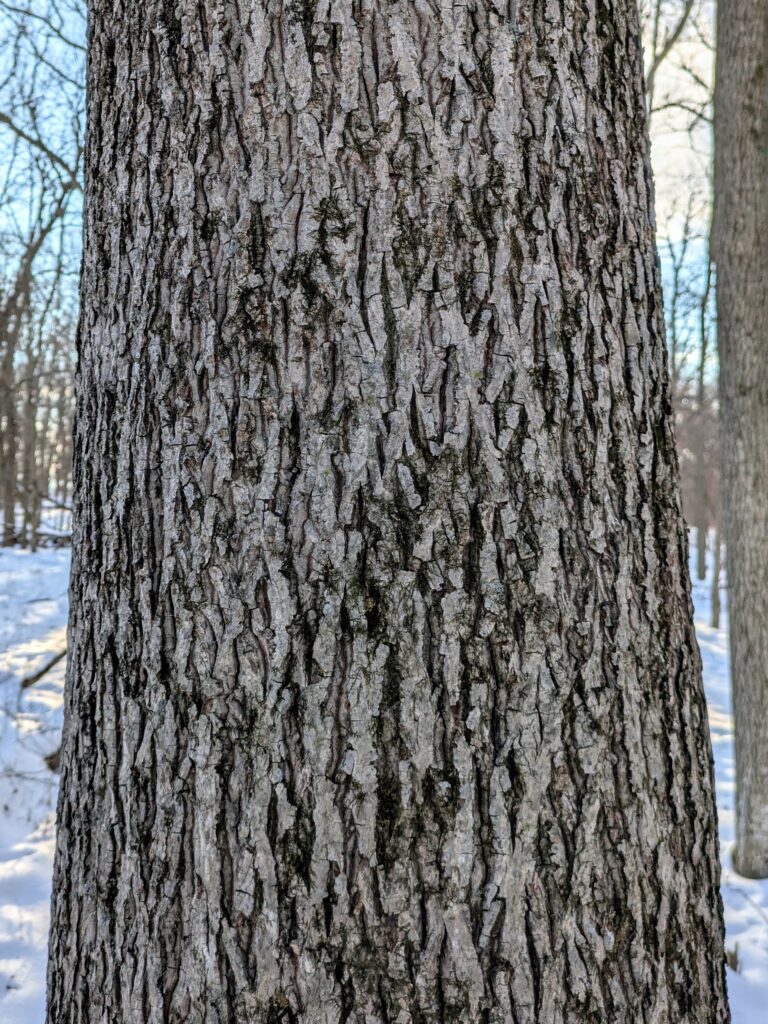
Tree #5
Bitternut Hickory (Carya cordiformis)
Bitternut is the most common hickory found at New Salem. Its bark varies with age, with mature trees like this one displaying light gray bark marked by interlaced furrows and flat-topped ridges. The small, bitter-tasting nuts might still be spotted on the ground this time of year, often remaining uneaten by wildlife when other food is plentiful, but the tree serves as a crucial food source for a diverse array of insects, making the tree a vital habitat for insectivorous birds.
Find more information about these and many other Illinois trees and shrubs at Trees, Shrubs, and Woody Vines of Illinois
